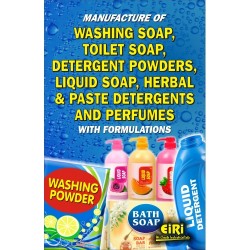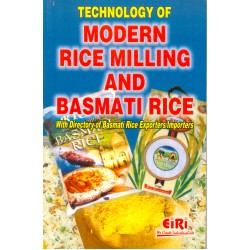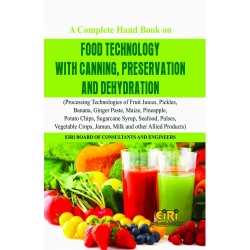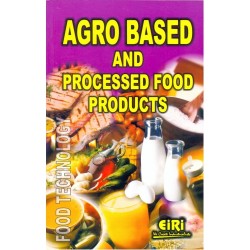technology of food preservation and processing (canning, fermented beverages, fruit concentrates, pickles, cold storage, alcoholic beverages, non alcoholic beverages) (hand book)

- More than 40 years of experience
- Managed by expert industrial consultants
- ISO 9001-2015 Certified
- Registered under MSME, UAM No: DL01E0012000
- 24/5 Research Support
Get your quesries resolved from an industry expert. Ask your queries before report or book purchase. - Custom Research Service
Speak to the our consultant to design an exclusive study to serve your research needs. - Quality Assurance
All reports are prepared by highly qualified consultants & verified by a panel of experts. - Information Security
Your personal & confidential information is safe & secure.
TECHNOLOGY OF FOOD PRESERVATION AND PROCESSING
FOOD PRESERVATION AND PROCESSING
FOOD ADDITIVES
What are Food Additives ?
Functions of Additives
Safety of Additives
When Food Additives should Not be used
SPOILAGE OF FOODS
Molds
Yeasts
Bacteria
Enzymes
Food Constituents
Insects
Spoilage
Growth of Bacteria
Reducing Growth Rate
FOOD POISONING
Poisoning by Chemicals
Poisonous Plants and Animals
Poisoning by Micro-Organisms and their Products
Food Poisoning Micro Organisms
Clostridium Botulinum
Clostridum Perfringens (WELCLM)
Staphylococcus Aures
Bacillus Cereus
Aspergillus Sp. (Fungal Food Poisonings)
Food Infection Micro-Organisms
Salmonella Sp.
Organisms in Which Proof is Inconclusive
Milk Borne Organisms
Organisms Uaually Transmitted by Means Other than Food
Viruses
Parasitic Infections
Trichinella Spiralis
Toxicants Naturally Occurring in Foods
Favism
Haemagglutinins
Ackee Fruit Poisoning
Presser Amines
Fungal Toxins
Seafood Toxins
Toxicants in Certain Natural Spices and Flavours
Toxic Substances Found in Certain Food Fats
Cyanogenetic Glucosides
Tumerogens and Carcinogens
Goitrogens
Miscellaneous Organic Toxicants Occurring in Foods
Toxic Minerals and Other Inorganic Compounds Occurring in Food and Water
Antivitamins
Radioactive Materials in Food
National and International Actions
SANITATION AND CLEANING REQUIREMENTS FOR FOOD PROCESSING PLANTS
Value of Plant Sanitation
Factors in-Plant Sanitation
Plant
Interior
Interior
Equipment
Water Supply
Rodents and Insects
Contamination
Cleaning Food Plants and Equipment
Functions of Detergents
Chemicals for Cleaning
Sanitizer
Standards of Cleanliness
Clean up Crew
INTRODUCTION TO QUALITY CONTROL, EVALUATION AND ASSURANCE
Quality
Standards for Quality
Legal Standards
Methods for Determining Quality
Subjective Methods
Objective Methods
Microscopic Methods
Factors Affecting Quality
Cultivar (Variety)
Maturity
Cultural Practives
Harvesting and Handling
Processing
Shelf Life
Basic Fundamentals for A Successful Quality Control Programme
Board of Directors
Organization Plan for a Food Processing Plant Showing Departments and Activities
Organization
Personnel
Standards and Specifications
Measurements
The Laboratory
Uses of the QC Laboratory
The QC Laboratory
The Grading Table
The Analytical Bench
The Taste Panel Table
Microbiological and Physical Testing Table
The QC Manager's Corner
Basic Equipment
METHODS OF PRODUCT DEVELOPMENT AND MARKETING TECHNIQUES
Ingredients of New Foods
Challenges Facing New Foods
Definition of Terms
The New Foods
Plant Proteins
Problems of the Future
Government Regulations Affecting New Foods
General Regulations
Food Additive Regulations
Labelling Regulations
State Regulations
Marketplace
Strategic Considerations Behind New Food Developments
Technology's Role
Protein Desire
Universality
Preservation
Palatability and Nutrition
Marketing of New Foods
Marketing Premises
Domestic Marketing
Industrial Markets
Future Marketing
Institutional Markets
Retail
International Marketing
FOOD GRADES, STANDARDS, LAWS AND REGULATIONS
Introduction
Types of Standards
Definition
Designation
Composition
Additives
Quality
Hygiene
Pesticide Residues
Packaging
Marketing and Labelling
Sampling, Analysis and Standards
Permissive
Mandatory
Prohibitory
Presumptive
Recipe
The Degree of Standardization Sought
Complete
Partial
Minimum
Platform
Trading
Commercial
The Binding Force of the Standard
Legal or Statutory
Voluntary
Draft
Temporary
The Field of Application of the Standard
Factory
Contractual
Selection of Method
National
International
Development of Grades and Standards of Quality
Methods of Measurement
Establishing a Scale
Weighting of the Quality Characteristics
Applications
Food Laws and Regulations
Food Laws
Food Standards in India
FOOD PRESERVATION PRINCIPLES AND METHODS
Perishable Foods
Semi-Perishable Foods
Non-Perishable Foods
Importance of Food Preservation
Principles of Food Preservation
Methods of Preservation
Temporary Preservation
Asepsis
Low Temperatures
Exclusion of Moisture
Mild Antiseptics
Pasteurization
Exclusion of Air
Electromagnetic Radiation
Permanent Prevention of Spoiling
Sterilization or Processing by heat
Sterilization or Processing Below 100 Degree C
Effect of Acidification
Use of Steam Under Pressure
Permanent Preservation by Antiseptics
Drying
Prevention by Fermentation
Exclusion of Air
PRESERVATION BY SALTING
Use of Salt
PRESERVATION BY SUGAR
Syrups for Canning
Testing Syrup Strength
Testing Syrup Strength
Temperature Crrections
High Solids-High Acid Foods
Jam
Jelly
Marmalade
Fruit Butter
Fruit Leather
Preserves
Candied Fruits
Fruit Confectioneries
Jam
Quality Attributes in Cases of Jams
Preparing the Fruit for Jam Making
Addition of Acid, Colour and Flavour
Jelly
Types of Jelly
Preparation of Jelly
Quality Attribute and Standard of Identity
Individual Attributes
Constituents of Jelly
Fruit Jelly Calculations
Unsugared Juinces
Sugar Added to Juice Failure of Jellies to Set
Cloudy or Foggy Jellies
Formation of Crystals
Syneresis or Weeping
Pectin-Composition, Properties and uses
Definitions
Composition
Jelly Grade (Firmness)
Physical Properties of Pectin
Uses of Pectin
Setting Time (Jellies etc)
PRESERVATION BY USING CHEMICALS
Benzoic Acid
Parabens
Sorbates
Propionates
Sulphur Dioxide and Sulphites
Nitrites
Deithylpyrocarbonate (DEPC)
Inorganic Agents Sulphur Dioxide
Hydrogen Peroxide
Chlorine
Carbon Dioxide
PRESERVATION BY DRYING
Advantage of Dried
Foods
Sun-Drying
Apricot
Banana
Date
Fig
Grape
Jack Fruit
Mango
Peach
Pear
Other Fruits
Mechanical
Dehydration
Direct Heated Driers
Indirect Heated Driers
Cabinet Driers
Tunnel Driers
Parallel Current Drying
Counter Current System
Kiln Driers
Spray Driers
Air Lift Driers
Foam Mat Driers
Drum Driers
Freeze Drying
Packing and Storage
Heat Treatment
Fumigation
Examination of Dried Fruits and Vegetables
Packing Using Flexible Flims
Food Dehydration
Why Foods are Dried
Heat and Mass Transfer
Surface Area
Temperature
Air Velocity
Dryness of Air
Atmospheric Pressure and Vacuum
Ivaporation and Temperature
Time and Temperature
Properties of Food Mateials
Constituent Operation
Solute Solution
Binding of Water
Cellular Structure
Shrinkage, Case Hardening Thermoplasticity
Food Porosity
Chemical and Other Changes
Reconstitutional Properties
PRESERVATION BY FERMENTATION
Definitions
Role of Microorganisms
Order of Fermentation
Types of Fermentation of Sugar
Fermentation Controls
The pH Value of Food is a Controlling Factor
Source of Energy
Yeasts Activity Controlled by Oxygen Supply
Temperature Requirements
Benefits from fermentation
PRESERVATION BY ANTIBIOTICS AND IRRADIATION
Preservation by Radiation
PRESERVATION BY COLD
Types of Cold Preservation
Chill Storage
Production of Low Temperature
Air Circulation and Humidity
Modified Atmosphere
Various Changes Occur During Freezing and Thawing
Methods of Food Freezing
Quick Fast Freezing
Slow Freezing
Air-Freezing
Indirect Contact
Indirect Contact Freezing
Immersion Freezing
PRESERVATION BY CONCENTRATION
Methods of Concentration
Kettle Evaporators
Flash Evaporation
Thin Film Evaporators
Freeze Concentration
Ultrafiltration and Reverse Osmosis
Advantages
PRESERVATION BY USE OF HEAT
Factors Affecting Heat Resistance
The Time Temperature Relationship
Initial Concentration of Spores (Or Cells)
Previous History
Composition of Substrate in which Cells or Spores are Heated
Types of Cell or Spore
Determination of Heat Resistance Thermal: Death Time
Heating Foods in Containers
Determining the Rate of Heating of Food Products
Plotting Heating and Cooling Data
Calculating heating Rates
Conduction heating Products
Designing and Evaluating Heat Processes for Sterilization Prior to Canning
COMMERCIAL CANNING
Investment
Factory Site
Factory Building
Water Supply and Drainage
Labour
Machinery and Equipment
Canning Process
Sorting and Grading
Washing
Peeling, Coring and Pitting
Hand Peeling
Peeling, Coring and Pitting by Machine
Peeling by Heat
Lye Peeling
Blanching
Can Filling
Syrup or Brining
Lidding or Clinching
Exhausting
Sealing
Processing
Heat Penetration in Cane
Processing Methods
Non acid Vegetable
Effect of Altitude on Processing Time
Effect of Altitude on Processing Pressure and Temperature
Effect of Acidity on Sterilization
Effect of Processing on Strain in Can
Medium acid pH 5.0-4.5
Acid pH 4.5-3.7
Cooling
Testing for Defects
Labelling, Storing and Packing
FRUIT AND VEGETABLE PRESERVATION
Physical Methods
Chemical Methods
By Fermentation
Drying
Sun Drying
Cabinet Drying
Cabinet Drying
Drum Drying
Vacuum Puffing and Dehydration
Foam mat Drying
Evaporating Cooling Cool Chambers
Freeze Drying
Acclerated Freeze Drying (A.F.D.)
Dehydro-freezing
FERMENTED BEVERAGE
Grape Wine
Raw Material
Fermentation
Maturing
Packing
Malt Beverages
Beer
Malting
Mashing
Ageing or Maturing
Finishing
Vinegar
Quality Standards
Grain Strength
Preparation of Vinegars
Ageing
Clarification
Pasteurization
Colouring
Types of Vinegar
Steps Involved in Vinegar Production
Anaerobic Fermentation
Aerobic Fermentation
Out Line Scheme of Vinegar Production
Problems of Vinegar Products
Vinegar Uses in Preservation
FRUIT CONCENTRATES
Jelly
Determination of Pectin Content
Alcohol Test
Jelmetre Test
Inversion of Sugar
Characteristics of an Ideal Jelly
Essentials of Ideal jelly
Fruits for Jelly
Preparation of Jelly
Selection of Fruits
Preparation of Fruits
Extraction of Pectin
Effect of Heat on Pectin
Straining and Clarification
Pectin Requirement
Theory of Jelly formation
Oisen's Theory
Fibril Theory
Concentration of Sugar
Effect of Acid (Acidity)
Spencer's Theory
Hinton's Theory
Quantity of Sugar to be Added
Cooking of Jelly
Foaming
Packing
Sealing and Sterilization
Difficulties in Jelly Making
Failure of Jellies to Set
Cloudy or Foggy Jellies
Formation of Crystals
Syneresis or Weeping
Fermented Jellies
Marmalades
Jelly Marmalades
Preparation
Preparation of Shreads of Peel
Cooking
Cooling
Flavouring
Canning and Sterilization
Darkening
Jam Marmalade
Jam
Preparing the Fruit for Jam Making
Addition Sugar
Addition of Acid, Colour
and Flavour Acid
Colour
Flavour
Boiling
End Point
Storage
Process
Problems in Jam Making
Crystalization
Sticks or Gummy Jam
Premature Setting
Surface Graining and Shrinkage
Microbial Spoilage
Tomato Paste
Tomato Ketchup
Tomato Sauce
FRUIT BEVERAGES
Fruit Juice
Use of Fining Agents
Finings are of Three Kinds
Enzymes
Finings Having Purely Physical Mechanical Action
Chemical Finings
Clarification by Freezing
Clarification by Heating
Cider
Grape Juice
Orange Juice
Grape Fruit Juice
Lemon Juice
Tomato Juice
Fruit Juice Squashes
Essentials of Squash
Steps in Squash Making
Lime and Lemon Squash
Orange Squash
Cashew Apple Squash
Jack Fruit Squash
Sapota Squash
Fruit Juice Cordials
Lime Juice Cordial (CFTRI, 1990)
Carbonated Beverages
Tomato Products
Tomato Juice
Washing and Trimming
Crushing
Pulping
Hot Pulping
Advantages
Cold Pulping
Defects
Common Salt and Sugar
Packing
PICKLES
Problems in Pickling
Role of Preservatives
Salt
Vinegar
Lactic Acid
Raw Material for Pickles
Salt should be
Colouring and Hardening Agents
Equipment
Cooking Utensils
Pickling Process
Dry Salting
Fermentation in Brine
Causes of Spoilage
Causes of Spoilage
Scum Formation
Cloudiness
Blemishes
Spoilage of Fermented Products
COLD STORAGE
Cellar Storage
Refrigerator or Chilling Temperatures
Use of Freezing Temperatures or Cold Storage Temperatures
Low Cost Rural Oriented Technique for Storage of Vegetables
FOOD STANDARDS AND LABELLING
End user standards
Health Ministry Standards
Introduction
Quality and its Down Gradation
Quality Centres
Prevention of Food Adulteration Act
Agmark
Fruit Products Order
Bureau of Indian Standards
Consumer Protection Act
Export Inspection Council
Other Quality Control Legislations
Rule: A-18.06 Food Grains
Rule A-07.03: Honey
Food Labelling
F.P.O. Labelling
ISI Mark
FPO Marketing
Agmark Marking
FRUITS AND FRUITS PRODUCTS
Canning of Fruits
Apples
Storage
Washing
Grading
Peeling and Coring
Blanching
Canning
filling
Exhausting
Sterilizing
Cooling
Mangoes
Oranges
Papaya
Pineapple
Harvesting
The Ginaca Machine
Trimming
Slicing
Grading and Packing
Prevacuumizing
Syruping
Double Seaming
Processing
Cooling
Crushed Pineapple
By-Products
Peaches
Grading
Cutting and Pitting by Machine
Peeling and Washing of Clingstone of Peaches
Slicing
Cans
Filling
Syruping
Peeling and Washing Freestone Peaches
Steaming
Scalding in Water
Combination Steam and Lye
Sorting
Grading
Exhausting
Closing
Processing
Cooling
Storage
Pears
Grading
Peeling and Coring
Grading and Filing
Syrupping
Exhausting
Closing
Process
Cooling
Preparation of Fruit Juices, Squashes and Cordialis
Sherbet
Equipment for Fruit Juices
Washing Equipment
Sorting Equipment
Halving and Turning Machine
Continuous Screw Expeller Press
Plunger Type Press
Roller Type Press
Double Operation
Basket Press
Rack and Cloth Press
Staining or Screening Equipment
Filtration Equipment
Deaerator and Flash Pasteurizer
Fruit Beverages
Preparation and Preservation
Selection and Preparation of Fruit
Juice Extraction
Deaeration
Straining, Filtration and Clarification
Use of Fining Agents
Enzymes
Chemical Finings
Clarification by Freezing
Clarification by Heating
Preservation of Fruit Juices
Pasteurization
Bottle Method or Holding Pasteurization
Pasteurization by Overflow Method
Preparation of Fruit Beverages
Fruit Beverages
Squashes and Cordials
Orange More Squash
Extraction of Juice
Preparation of Squash
Grapefruit Squash
Lemon Squash
Lime Squash
Lime Juice Cordial
Jaman Squash or Syrup
Mango Squash
Peach Squash
Phalsa Squash
Pineapple Squash
Plum Squash
Syrups
VEGETABLES AND VEGETABLE PRODUCTS
Comparison of Fruits and Vegetables
Okra
Fresh Okra
Soaked Okra
Filling and Exhausting
Mushrooms
Sorting of Washing
Blanching
Size-Grading
Filling
Canning
Peas
Vining
Cleaning
Grading
Blanching
Grading and Maturity
Brine
Fill of Cans
Exhausting
Cooling
Cabbage
Pumpkin
Washing and Preparation for Canning
Pulping
Canning
Beans
Vining
Grading
Blanching
Filling
Exhaust
Cooling
Potatoes
Washing
Pre-heating
Peeling
Inspection and Trimming
Size-Grading
Filling
Sealing and Processing
Cooling
Carrols
Washing
Grading
Blanching
Peeling
Slicing or Dicing
Canning
CEREALS AND BAKED PRODUCTS
Wheat
Bran
Germ
Endosperm
Classification
Flour
Preparation of Flour Starts with the Following Unit Operations
Receiving
Cleaning
Conditioning
Milling
Bleaching and Maturing
Enrichment
Baking Formulation
Ingredients
Wheat Flour
Yeast
Water
Milk and Milk Derivatives
Fats
Sugars
Eggs
Dough Conditioners
Salt
Processing
Mixing
Straight Dough Method
Sponge Dough Method
Leavening
Yeast Fermentation
Chemical Leavening
Gas Production and Retention
Dough Dividing and Rounding
Intermediate Proofing
Final Proofing
Baking
SUGARS AND SWEETENERS
Cane Sugar Processing
Weighing
Cutting
Crushing and Shredding
Extraction of Juice
Purification
Evaporation
Crystallisation
Purity of Massecuite
Separation of Crystals and Molasses
Refining
Beet Sugar
Juice Extraction from beets
Maize Sweeteners
Acid-Conversion Method
Acid Enzyme Conversion Method
Enzyme enzyme
Inversion Method
MILK AND MILK PRODUCTS
Palatability of Milk Foods
Digestibility
Cleanliness
Economy of Milk as Food
Milk Products
Butter
Preparations
Lassi or Chhachh
Unfermented Milk Products
MEAT AND MEAT PRODUCTS
Composition of Meat
Classification of Meat
Mutton
Pork
Organs Meals
Sausages
Cooking of Meats
Dry Heat Methods
Moist Heat Methods
Curing of Meat
Smoking
SEA FOODS
Types of Fish
Composition and Nutritive Value
Preservation and Processing
Freezing
Canning
Fish Products
POULTRY, EGGS AND EGG PRODUCTS
Classification
Poultry Processing
Slaughter and Bleeding
Scalding
Defeathering
Evisceration
Chilling
Packaging
Nutritive Value
Eggs and Egg Product
Nutritive Value
Egg Quality
Evaluation of Egg Quality
Egg Grading
Egg Processing
Egg Substitutes
Other Products
Leaving Power
Binding and Thickening
Emulsifying Power
Tenderizing
Moisture Retention
Flavour
Nutrition
Colour
CANDIED FOODS
Candy Making
Cnfectioner's Glucose
Dextrose
Invert Sugar
Bulk Storage of Fruits
Syrup Treatment
Draining and Drying
Glaceing
Crystallized Fruits
Spoilage
Petha (Benincase Cerifera): Preparations
FERMENTED NON-ALCOHOLIC AND ALCOHOLIC BEVERAGES
Tea
Green Tea Coffee
Cocoa (Theobroma Cacao)
Beer
Wines
Cider
Branndy
Whisky
Gin
Vinegar
Vinegar Bacteria
Malt Vinegar
Alcoholic Fermentation
Acetic Acid Fermentation
Preparation
Orieans Methods
Quick Methods
BY-PRODUCT UTILIZATION
Characteristics of Food Wastes
Fruits Wastes
Vegetable Wastes
Cereals and Field crop Wastes
Apricot
Seperation of Pits and Kernels
Grape
Mango
Banana
Citrus
Utilization of Vegetable Waste
Peas
Tomato
Other Vegetables
PACKAGING AND PACKING MATERIALS
Food Packaging
Requirements and Functions of Containers
Packaging Materials
Metals
Glass
Papers
Plastics and Films
Laminates
Edible Films
Wooden Packaging
POST HARVEST FOOD CONSERVATION
Problems of Farm Level Storage in India
EQUIPMENTS COMMONLY USED IN PRESERVATION OF FRUITS & VEGETABLES
Food Dehydration
Sun Dryer
Solar Dryer
Cabinet or Tray Dryer
Tunnel Dryer
Conveyor Dryer (Conveyor Band Dryer/Belt Dryer)
Spray Dryer
Freeze Dryer
Drum Dryer
Fluidized Bed Dryer
Spouted Bed Dryer
Flash Dryer
Microwave Dryer
Food Irradiation Technology
Ionizing Radiation
Sources of Radiations
Process Control
Food Freezing and Refrigeration
Refrigeration Systems in Cold and Freezer Storage
Compression Refrigeration System
Ammonia Systems
Food Canning
During the Process
Metal or Tin Cans
Glass Cans
FRUITS AND VEGETABLES
Fruits
Composition
Nutritional Contribution
Vegetables
Leafy Vegetables
Roots and Tubers
Flavour
Composition
Nutritional Significance f Vegetables
Preservation of Fruit & Vegetable
Preservation or Delay of Microbiatal Decomposition
Prevention or Delay of Self Decomposition of the Food
Prevention of Damage due to Insects, Animals, Mechanical
Methods of Preservation
Jam
Essentials of Ideal Jam
Pectin
Sugar
Aci
Water
Colour Flavour and Preservative
Steps in Jam Making
Tests for Doneness of Jam
Colour and Flavour
Bottling
Moramba
Essentials of the Ideal Moramba
Fruit
Sugar
Water
Steps in Making Moramba
Jelly
Steps in Jelly Making
Squash
Essentials of Squash
Steps in Squash Making
Proportion of Sugar Based on Type of Fruit Juice
Synthetic Syrups
Method
Marmalade
Jam Marmalade/Jelly Marmalade
Candied Peels
Method
Freezing
Steps in Home scale Freezing of Vegetables
Jelly Crystals
Tomato Ketchup
Tomato Chutney
Apple Raisin Chutney
Sauce
Tamarind Sauce
Fruit Toffee
Guava Cheese
Procedure
Salads
Nutritive Value of Salads
Salad Dressing
Essential in Making a Good Salad
Salads and Salad Dressing
Mixed Pulse and Vegetable Salad (Dinner Accompaniment)
Sprouted Moong Salad (Dinner Accompaniment)
Paneer, Apple and Pineapple Salad
Russian Salad (Main dish/meal)
Fruit Salad (Dessert)
Tossed Salad (Dinner Accompaniment)
Orange and Cabbage Salad (Dinner Accompaniment)
Mixed Vegetable Salad with Curd Sauce
Coleslaw (Dinner Accompaniment)
Beverages
Coffee
Production
Processing
Roasting
Chemical Composition of Coffee
Coffee Making
Vacuum Coffee
Drip Coffee
Percolator Coffee
Steeped Coffee
Espresso Coffee
Iced Coffee
Soluble Coffee
Chicory (Cichorium Intybus)
Tea (Camellia Sinensis)
Processing
Black Tea
Green Tea
Oolong Tea
Composition of Tea
Preparation of Tea
Iced Tea
Instant Tea
Cocoa (Theobroma Cocoa)
Production
Processing
Chocolate
Compsition
Cocoa Beverages
Soft Drinks
Ingredients
Sugar
Flavouring Materials
Colouring Materials
Acids and Preservatives
Water
Carbon Dioxide
Alcoholic Beverages
Wines
Beer
Sake
Sonti
Pulque
Ginger
Pilsener
Bock Beer
Coconut Sap
Distilled Spirits
Whisky
Brandy
Rum
Gin
Vodka
Traditional Eastern Alcoholic Beverages
COLD STORAGE
Introduction
Market Potential
Basis and Presumptions
Implementation Schedule
Technical Aspects
Process of Manufacture
Motive Power
Pollution Control
Energy Conservation
Quality Control and Standards
Financial Aspects
Fixed Capital
Machinery and Equipment
Working Capital (Per Month)
Raw Materials
Utilities
Other Contingent Expenses
Total Capital Investment
Financial Analysis
READY TO SERVE CURRIED VEGETABLES
Introduction
Market Potential
Basis and Presumptions
Implementation Schedule
Process of Manufacture
Production Capacity
Motive Power
Pollution Control
Quality Control and Standards
Energy Conservation
Financial Aspects
Fixed Capital
Working Capital
(Per Month)
Total Capital Investment
Financial Analysis
TOMATO PRODUCTS
Introduction
Basis and Presumptions
Implementation Schedule
Technical Aspects
Process of Manufacture
Tomato Juice
Tomato Puree
Tomato Ketchup
Quality Control and Standards
Pollution Control
Recipe for Final Product
Production Capacity (Per Annum)
Motive Power
Financial Aspects
Machinery and Equipment
Working Capital (Per Month)
Raw Material
Machinery Utilization
Financial Analysis
SUPPLIERS OF PLANT AND MACHINERIES
Engineers India Research Institute (EIRI) is a renowned name in the industrial world for offering technical
and financial consultancy services.
EIRI services are:
Detailed Feasibility Reports
New Project Identification
Project Feasibility and Market Study
Identification of Lucrative Industrial Project Opportunities
Preparation of Project Profiles / Pre-Investment and Detailed Feasibility Studies,
Market Surveys / Studies, Market Survey Cum Detailed Techno-Economic Feasibility Reports
Project Reports in CD Roms
Identification of Plant /Process/Machinery and Equipment, Industrial General Guidance for setting up new
industrial projects.
Our most up-to-date and Technologically Advanced Industrial Project Reports, categorized with respect to
Financial Outlays and Sector – wise Classification are immensely useful for :
Existing Small or Medium Scale Industrialists facing competition from large houses
Young Entrepreneurs dreaming to start their own industrial enterprise
Young Graduates and Professionals wishing to begin their career
Industrialists interested in Debottlenecking their capacities & New Product – Lines
Large Industrial Houses pursuing Expansion, Growth and Diversification Plans
....
How to Make Project Report?
Detailed Project Report (DPR) includes Present Market Position and Expected Future Demand, Technology, Manufacturing Process, Investment Opportunity, Plant Economics and Project Financials. comprehensive analysis from industry covering detailed reporting and evaluates the position of the industry by providing insights to the SWOT analysis of the industry.
Each report include Plant Capacity, requirement of Land & Building, Plant & Machinery, Flow Sheet Diagram, Raw Materials detail with suppliers list, Total Capital Investment along with detailed calculation on Rate of Return, Break-Even Analysis and Profitability Analysis. The report also provides a birds eye view of the global industry with details on projected market size and then progresses to evaluate the industry in detail.
We can prepare detailed project report on any industry as per your requirement.
We can also modify the project capacity and project cost as per your requirement. If you are planning to start a business, contact us today.
Detailed Project Report (DPR) gives you access to decisive data such as:
- Market growth drivers
- Factors limiting market growth
- Current market trends
- Market structure
- Key highlights
Overview of key market forces propelling and restraining market growth:
- Up-to-date analyses of market trends and technological improvements
- Pin-point analyses of market competition dynamics to offer you a competitive edge major competitors
- An array of graphics, BEP analysis of major industry segments
- Detailed analyses of industry trends
- A well-defined technological growth with an impact-analysis
- A clear understanding of the competitive landscape and key product segments
Need Customized Project Report?
- Ask for FREE project related details with our consultant/industry expert.
- Share your specific research requirements for customized project report.
- Request for due diligence and consumer centric studies.
- Still haven't found what you're looking for? Speak to our Custom Research Team
About Engineers India Research Institute:
Note: We can also prepare project report on any subject based on your requirement and country. If you need, we can modify the project capacity and project cost based on your requirement.
Our Clients

Our Approach
- Our research reports comprehensively cover Indian markets (can be modified as per your country), present investigation, standpoint and gauge for a time of five years*.
- The market conjectures are produced on the premise of optional research and are cross-accepted through associations with the business players
- We use dependable wellsprings of data and databases. What's more, data from such sources is handled by us and incorporated into the report
Why buy EIRI reports?
- Our project reports include detailed analysis that help to get industry Present Market Position and Expected Future Demand.
- Offer real analysis driving variables for the business and most recent business sector patterns in the business
- This report comprehends the present status of the business by clarifying a complete SWOT examination and investigation of the interest supply circumstance
- Report gives investigation and top to bottom money related correlation of real players/competitors
- The report gives gauges of key parameters which foresees the business execution





















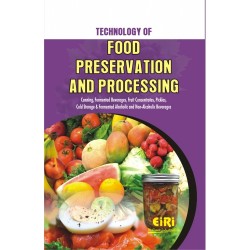

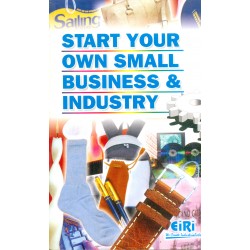

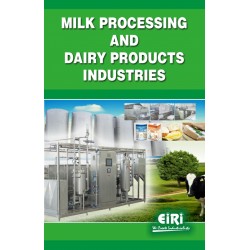
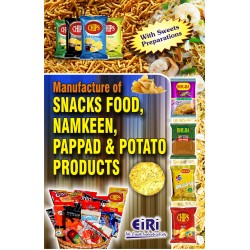

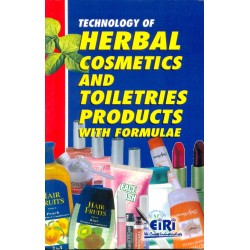
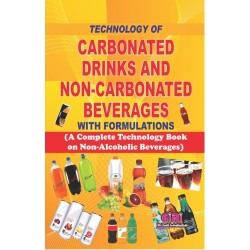
-250x250h.jpg)
